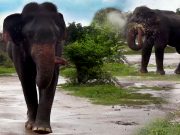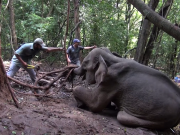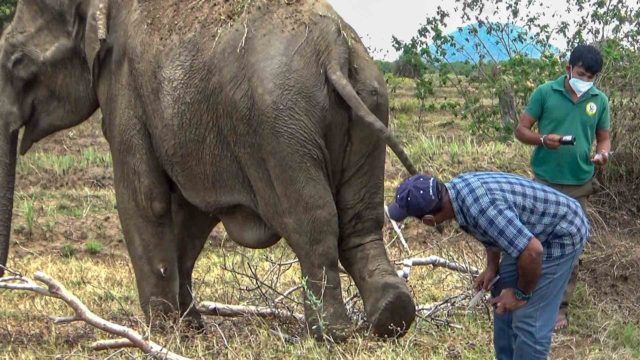We often hear about tumors in various parts of the body. Just like humans, animals also face this health issue in which irregular cell growth results in swelling and cancer. This elephant has a tumor in his right hind leg and stomach which makes it difficult for him to even walk.
But then there is the wildlife department of Sri Lanka aimed to treat animals in pain and difficulty. One of their teams is here to treat this elephant. A tumor is basically an abnormal mass of tissue formed when cells grow and divide more than normal, or do not die when they should. They can be cancerous (malignant) or benign (non-cancerous). There are also premalignant tumors that are not yet cancerous but can potentially become malignant.
Since the number of elephants in Sri Lanka has already reduced in the past few decades, it cannot afford to lose more of its elephant individuals. Rather, they can secure their lives by regulating the hunting and poaching by humans, and by saving their lives whenever they are in trouble.
The wildlife department of Sri Lanka understands the value of elephants’ lives and performs its duties toward the gentle giants quite well. Just like in this condition, whenever they receive information about an elephant in trouble, they approach it and save it by appropriate means. They provide on-the-spot first aid as well as detailed medications in the treatment centers.
Before starting the treatment, elephants are often made numb so that they may not feel much pain. Afterward, they are provided appropriate treatment and carried to the treatment center if needed. There are many ways to treat a tumor. The veterinarians decide which method suits best to the individual keeping in mind various biological and environmental factors.
What’s obvious is that the wildlife team is going to try its best to make this elephant get rid of this health condition. And this is what the core purpose of the wildlife department is – to save the animals in pain and trouble.



























